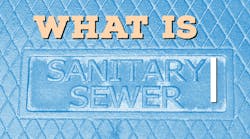The National Science Foundation has been cutting its timetable for the release of nanotech-fueled products from five or 10 years to two or three years, said Mihail Roco, NSF's senior adviser on nanotechnology.
First products likely to emerge are in medicine, Roco said.
Nanotechnology will so thoroughly impact the way science addresses medicine, food, electronics and the environment, that within a decade or so, Roco envisions a $1 trillion yearly market in products that carry nano-components, including all computer chips, half of pharmaceuticals and half of chemical catalysts.
The current state of nanotechnology mirrors the level of development in the field of polymers and plastics in the 1930s, when it was in its infancy, said Kevin Ausman, director of the Rice University Center for Biological and Environmental Nanotechnology. The plastics industry quickly expanded, providing the materials for a large portion of manufactured goods.
With the world's population expected to reach 11 billion by 2050, scientists like Roco believe nanotechnology could allow governments and industry to keep the planet livable, by slashing waste and helping provide sustainable food, water and energy.
NSF's National Nanotechnology Initiative, which leads the U.S. government's efforts in the field, has been researching nanotechnology's potential environmental benefits.
For example, filter systems for drinking or wastewater, natural gas pipelines and smokestacks can be designed at the molecular level, to remove even the most minuscule of impurities. For water, that means cleaner drinking. For gas, finer filtration means cleaner burning, with fewer smog-creating impurities.
Industrial plants may be able to use more sensitive emission "scrubbers" that screen even nano-sized flecks of soot from waste gases.
Nanoparticles are also being examined for use as sensors to monitor air or drinking water for the presence of toxins. Farther out, such sensors might be networked to give a full picture of the environment and any encroaching pollutants even chemical or biological weapons.
Pollution-absorbing nanoparticles that can be used to clean up tainted water or soil is another concept under study, Roco said.
And the entire concept of nanotechnology building devices at the molecular level means that products will be smaller. There is less waste in the production process and in the trash, when nano-devices are discarded at the end of their lives, Roco said.
"By understanding the molecular level, the overall trend leads to sustainable development the opposite of increased pollution," Roco said.
Source: AP

